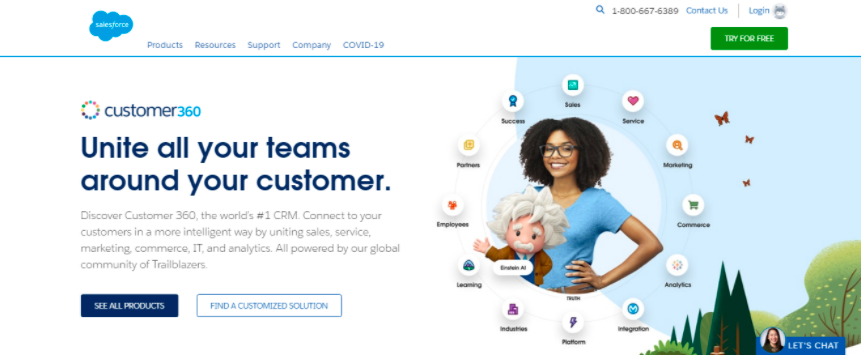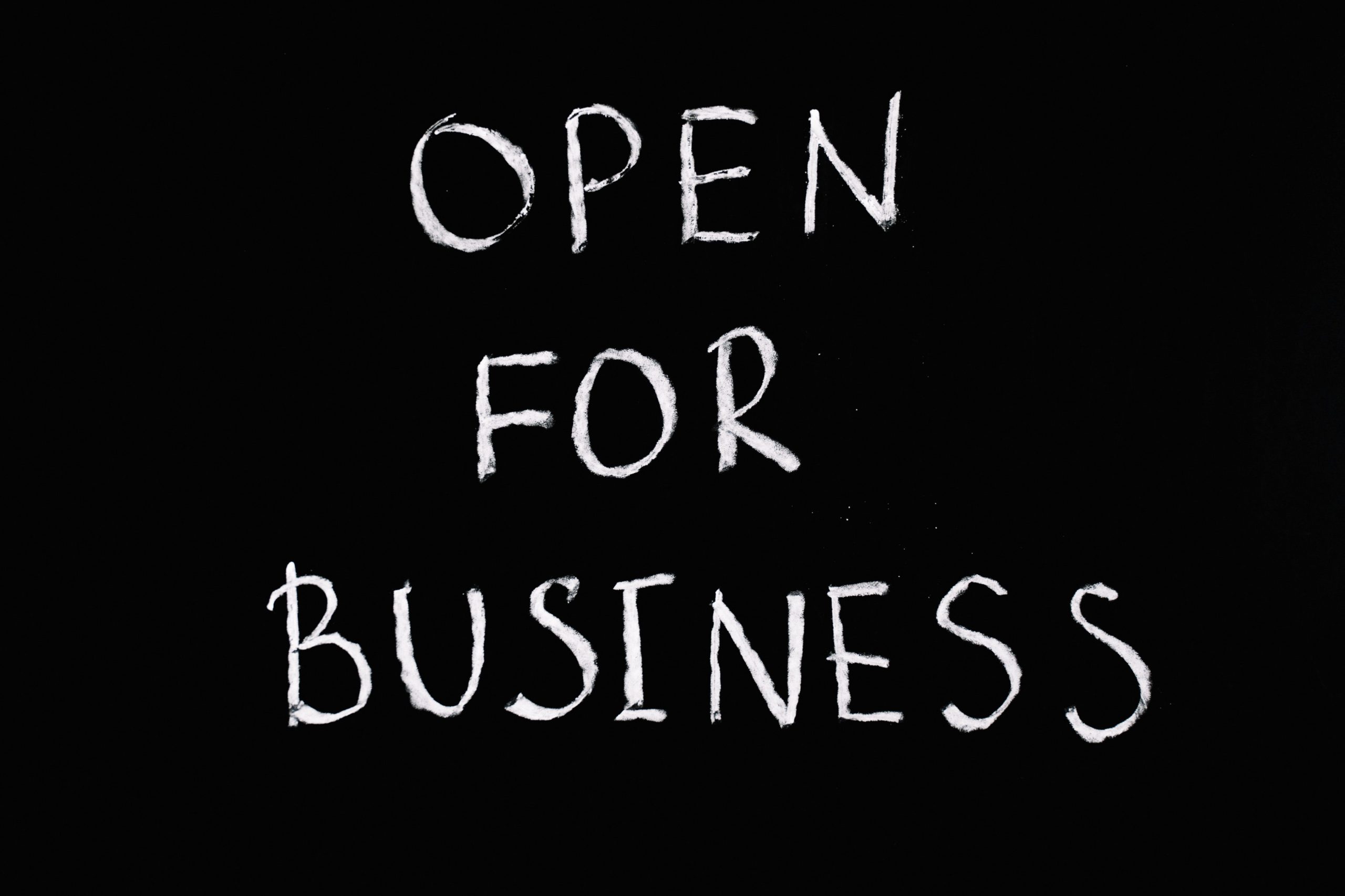
How to Use Salesforce To Increase Customer Retention
Last update: 21 November 2022 at 02:31 pm
Customer relationship management (CRM) is about overseeing and nurturing a company’s interactions and relationships with potential and existing customers. As a leading CRM solution, Salesforce offers a vast range of tools to help build and manage these relationships, boost business growth, bolster marketing efforts, and much more.
These efforts go hand-in-hand with customer retention, which is a core business goal for most organisations. Also known as the churn rate, this key metric is crucial to short- and long-term success. In this article, we take a closer look at CRM and how to use Salesforce to increase customer retention and avoid churn.
A Brief Look at CRM
CRM has come a long way since phone calls, handshakes, and the occasional letter in the postbox. Today, organisations use CRM software to:
- Store customer and prospect contact information
- Record and manage interactions and service issues
- Identify potential leads
- Launch and manage marketing campaigns
- Gather data and gain in-depth insights into customer behaviour
With the above CRM tools on one centralised platform, businesses can streamline their processes, enhance their customer relationships, and, ultimately, bolster profitability.
From prospecting and marketing to customer acquisition and retention, a CRM system allows small, medium, and large organisations to improve efficiency on all fronts.
It helps organisations manage the entire customer lifecycle as well as after-sales care and even digital commerce. Companies also use CRM solutions to nurture other relationships with individuals, including colleagues, suppliers, and service users.
When it comes to customer retention, these elements all play a pivotal role. As you’ll learn below, avoiding churn takes time, dedication, and a well-executed strategy. Let’s take a look at what Salesforce is, and some of the products it offers before getting into customer retention.

What is Salesforce?
Salesforce is a software-as-a-service (SaaS) product, which means you choose a subscription, sign up, log in and use the online suite of tools to your heart’s content. Unlike traditional software, there’s no purchase, download, or installation required. This also means that your entire organisation can access it anytime, anywhere.
As an industry leader, Salesforce was one of the first to launch a cloud-based CRM system. Today, its vast range of SaaS CRM solutions dominates the market. Besides relationship management, Salesforce offers a variety of tools for custom app development too. It caters to small enterprises and large corporations alike.
With Salesforce, businesses are better equipped to understand their customers’ needs, manage their expectations, execute marketing campaigns, identify potential prospects, oversee performance, and much more. Some of Salesforce’s primary products include:
Salesforce Platform
- Customisable solutions
- Quality apps builder
- Adjust security levels
- Scale on a secure network
Sales Cloud
- Contact and lead management
- Workflow automation
- Collaborative forecasting
- Rules-based lead scoring
Marketing Cloud
- Tailor-made email campaigns
- Customer journey builder
- Customer experience tracking and management
- Marketing and sales automation
- Personalised interactions
- Data analysis and decision-making
Service Cloud
- Multi-channel customer interactions
- AI-powered chatbots
- Automated processes
- Customer self-service options
- Analytics and insights
Commerce Cloud
- Personalised campaigns
- Customised shopping experiences
- Automated transactions and processes
- Scalable platform
Tableau Analytics
- Shareable insights
- Drag-and-drop analysis
- Data management and governance
- Visualisations
Integration
- Automated business processes
- Export and unify data
- Prebuilt APIs
- Customisable dashboards

Why You Should Care About Customer Retention
Customer retention can be described as the rate at which businesses keep active customers over a given period. It’s also known as the churn rate and is often a key performance indicator (KPI). A lower churn rate means an enterprise has a higher number of loyal customers. In turn, this indicates a more successful business that manages to retain more customers over time.
Closing leads is an essential part of any marketing strategy. However, retaining customers is just as important. In fact, studies have consistently shown that acquisition is 5 to 25 times more expensive than customer retention. After all, it’s more cost-effective to upsell and promote products or services to existing clients that already know and trust your brand.
Research also indicates that even a 5% increase in customer retention equals around 25% more profit. Moreover, loyal customers tend to make repeat purchases, meaning they’re valuable and the kind of business you want. Plus, they’re more likely to refer your products or services to others.
Using Salesforce to Increase Customer Retention
So, how do you keep more customers and avoid churn using Salesforce? Here are six ways to implement an effective customer retention strategy.
Keep All Your Data In One Place
Sales and marketing teams have historically existed at odds with one another. Working in data silos, they’d compete for precious customer data. At the same time, customer service was also separate. However, software solutions like Salesforce have abolished that problem.
Its powerful integrations allow for streamlined customer communication touchpoints. Rather than transferring data manually from one system to another, customer interactions can be recorded and captured in customer service software and your CRM. This creates transparency throughout the entire sales funnel.
With marketing, sales, and customer service teams having the same 360-degree view of each customer, they can make more informed decisions. In turn, this means improved customer service, and therefore, retention.

Take Advantage of Customer Insights
How a business collects, analyses, and ultimately acts on data is paramount to its success.
If you’re already using Salesforce while integrating your other systems, then you’ve likely collected a fair amount of customer data by now.
Tableau Analytics comes with AI-powered analytics tools that help businesses understand why something happened and what to do about it. You can generate customised reports, create visualisations and analyse pertinent information to:
- Understand performance trends
- Make predictions
- Identify problem areas
- Find solutions
- Take appropriate action
With tailor-made analytics, you can increase your customer retention rate by identifying clients who are likely to churn based on their low activity levels and then taking preventative measures. Salesforce offers data-driven recommendations and guidance to make this easier for you too.
Use Segmentation to Deliver Valuable Offers
Salesforce CRM allows you to segment prospects and customers into groups based on their interactions with your brand. You can then use these datasets to create personalised, nurturing marketing campaigns at an individual level.
Email segmentation is crucial when it comes to retargeting and retention efforts. It ensures that a company delivers relevant content at the ideal time. For example, existing customers will likely get annoyed if you bombard them with initial purchase promotions. However, if they receive a truly valuable offer that caters to their needs or wants, then they’ll likely be pleased.

Encourage Dormant Customers To Take Action
Another excellent way to increase retention is by making sure that your existing customers are as active as possible. First, use Salesforce analytics to identify and track inactive clients. You can then set up automated emails via the CRM platform or another integrated email service provider.
Once again, your customers will only appreciate an email that offers valuable information. For instance, if you know a client hasn’t used one of your products to its full potential, an email explaining its full benefits could reignite their interest. Best practice guides, advanced tips or case studies may all be ideal options.
Keep in mind that this strategy is best applied to inactive clients. A customer already familiar with a product won’t enjoy an influx of automated emails that don’t provide any value.

Use Social Media To Your Advantage
Studies have found that social media platforms are the channels of choice when it comes to quick responses. In fact, research also indicates a 15% increase in churn for businesses that don’t respond via social media.
Nowadays, it’s no secret that customers expect personalised and immediate service from brands. Fortunately, social media is a fantastic way to resolve potential issues and queries in record time. With Salesforce Social Studio, you’ll have all the tools you need to:
- Monitor and analyse conversations from popular social networks
- Track business-relevant keywords
- Identify influential conversations
- Monitor consumer sentiments
You can then use these actionable insights to improve customer retention by making data-driven decisions. Moreover, Salesforce’s social media integrations mean you can create a unified customer experience. After all, if you care enough about your customers to cater to their communication preferences, you’re more likely to keep their business.
Understand Your Customers’ Experiences
Customer journey mapping is the process of charting your customers’ engagements with your brand at all touchpoints, such as:
- Opening an email
- Redeeming a coupon
- Clicking on an advert
- Contacting customer support
According to a Salesforce report, 65% of marketing professionals said that a customer journey strategy positively impacted churn rates, while 70% said it affected revenue growth.
When you have a better understanding of the steps customers take before purchasing your service or product, you’ll be able to deliver a personalised experience. With the Salesforce AI-powered Marketing Cloud, you can predict behaviours, make targeted recommendations and engage with your customers at every stage of their journey.

The Takeaway
Customer relationship management is at the forefront of any enterprise, and Salesforce offers a world-class CRM solution and various products. It addresses countless business needs, from acquisition and sales to engagement and marketing. Now that you know how to use Salesforce to avoid churn, you can increase customer retention and ultimately grow your business.





